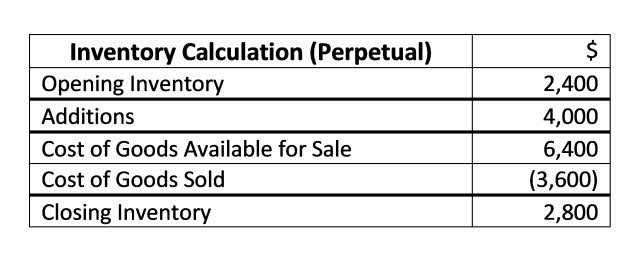Content

The purpose is the ensure all assets are equal to all liabilities and owners’ equity. After the heading, the balance sheet is separated into two sides. The How to Make a Balance Sheet right side is to list both the company liabilities and owner’s equity accounts. An easy way to remember this is to remember the balance sheet equation.
What does a good balance sheet look like?
Entities with strong balance sheets are those which are structured to support the entity's business goals and maximise financial performance. Strong balance sheets will possess most of the following attributes: intelligent working capital, positive cash flow, a balanced capital structure, and income generating assets.
Re-write the resulting balance sheet into the format required for presentation. For example, it may be in comparative format, where the financial position of the business as of multiple dates are listed side-by-side in the report. With balance sheet data, you can evaluate factors such as your ability to meet financial obligations and how effectively you use credit to finance your operations . Remember —the left side of your balance sheet must equal the right side (liabilities + owners’ equity). It is also convenient to compare the current assets with the current liabilities.
How to Read a Balance Sheet
This point is crucial if you need to buy stock from a startup company and you need to judge whether you can make a profit from it. Therefore, it is important for entrepreneurs as well as graduates who seek positions in business world to learn to make balance sheets . Current assets are assets that can turn into cash within one year of the balance sheet date. They are listed in order of relative liquidity, in other words how easily they could be converted into cash. Common current asset accounts include cash, marketable securities (such as stocks, bonds, etc.), accounts receivable, supplies, inventory, and prepaid expenses (such as prepaid insurance, prepaid rent, etc.).

As the name suggests, the equation balances out, with assets on the one side being equal to the sum of liabilities and equity on the other. Liabilities are also split into short and long-term concerns, and include debts and obligations payable to outside parties. This course, which is part of our free QuickBooks Online tutorials, aims to help you build a better understanding of QuickBooks Online, our top recommended small business accounting software. If you have a QuickBooks subscription, watch the video below, or execute the steps we list, as you follow along in your own account. If you haven’t signed up for QuickBooks yet, then get a 30-day free trial or 50% off for three months. Enter fixed assets, such as equipment, vehicles, land, buildings and other highly valuable assets owned by your business that depreciate over time. Owners’ equity refers to the amount of money owed to the owners of the business after all expenses have been accounted for.
How to Prepare a Basic Balance Sheet
Full BioKristen works as a freelance writer for The Balance covering small business topics and terms pertaining to entrepreneurship, business finance, and more. With a background in business, marketing, SEO, and news media, Kristen has experience in management at a Fortune 100 company and writing and editing content for education, news, and business websites. Classify liabilities and compute the total volume (see steps 3-4). This is the value of funds that shareholders have invested in the company.
- A balance sheet forecast is one such projection that is usually completed in tandem with an income statement forecast.
- The statement of cash flow, or the cash flow statement, is a financial statement that shows how the cash flows in and out of a business within a given time period.
- Determine the period of time you need the balance sheet to cover.
- List all business assets, such as startup capital, equipment, materials and property the business currently holds.
- A balance sheet is an important reference document for investors and stakeholders for assessing a company’s financial status.
These accounts vary widely by industry, and the same terms can have different implications depending on the nature of the business. But there are a few common components that investors are likely to come across. Fundamental analysts use balance sheets https://www.bookstime.com/ to calculate financial ratios. The balance sheet adheres to an equation that equates assets with the sum of liabilities and shareholder equity. The balance sheet is one of the three core financial statements that are used to evaluate a business.
Part 2 of 4:Preparing the Assets Section
Enjoy refreshingly easy payments, deposits, credit cards, and expense tracking— all in one place.Learn more. “This article has a lot of important information. Now I know what a balance sheet is and how to prepare it.” “It was great in explaining it. It would be great if you added one example on how to prepare a balance sheet for us.”
- By analysing balance sheet, company owners can keep their business on a good financial footing.
- The layout of the balance sheet is divided into separate sections to represent the company’s assets, liabilities, and owners’ equity.
- Save time and track your finances in one place—let QuickBooks accounting software do the hard work for you.
- Added together with the liability total, it should match or balance with your total assets.
- Yield is variable, fluctuates and is inclusive of reduced expense fees, as determined solely by the fund manager.
Total liabilities is calculated as the sum of all short-term, long-term and other liabilities. Total equity is calculated as the sum of net income, retained earnings, owner contributions, and share of stock issued.
Use this guide to learn what goes into preparing an accurate balance sheet.
Review your company’s financial position with our free balance sheet template — and watch your business grow with the Wise multi-currency business account. A balance sheet keeps track of a company’s assets and liabilities and provides insight into the current financial state of a company. In this article, we discuss what a balance sheet is and how to make a balance sheet with a template and examples. The second section of the cash flow statement is for listing investing activities. Investing activities describe income that came in or went out of a business as a result of transactions that involved the purchase or sale of items, such as plant, property, or equipment. Total assets is calculated as the sum of all short-term, long-term, and other assets.
One of these entries appears on the income statement and the other appears on the balance sheet. Using a balance sheet template will streamline the next step of the process, so that you don’t have to manually insert all of the fields yourself. This is a vital step towards understanding the core strength of a company, and to assess the business performance. FreshBooks provides a range of income statement and balance sheet examples to suit a variety of businesses, no matter if you have just started out or if you are looking for a different solution. An example of permanent accounts or balance sheet accounts on a trial balance report is given below.
Last but not least, Stockholder’s equity includes common stock and retained earnings . The balance sheet is a type of financial statement used by a business to determine its financial standing. It presents the company’s assets, liabilities, and owners’ equity.
Most lenders and investors assess the balance sheet to see if your business can collect payments from clients, repay debts on time, and manage assets responsibly. Knowing how to create and read a company’s balance sheet is essential to understanding the state of a business.